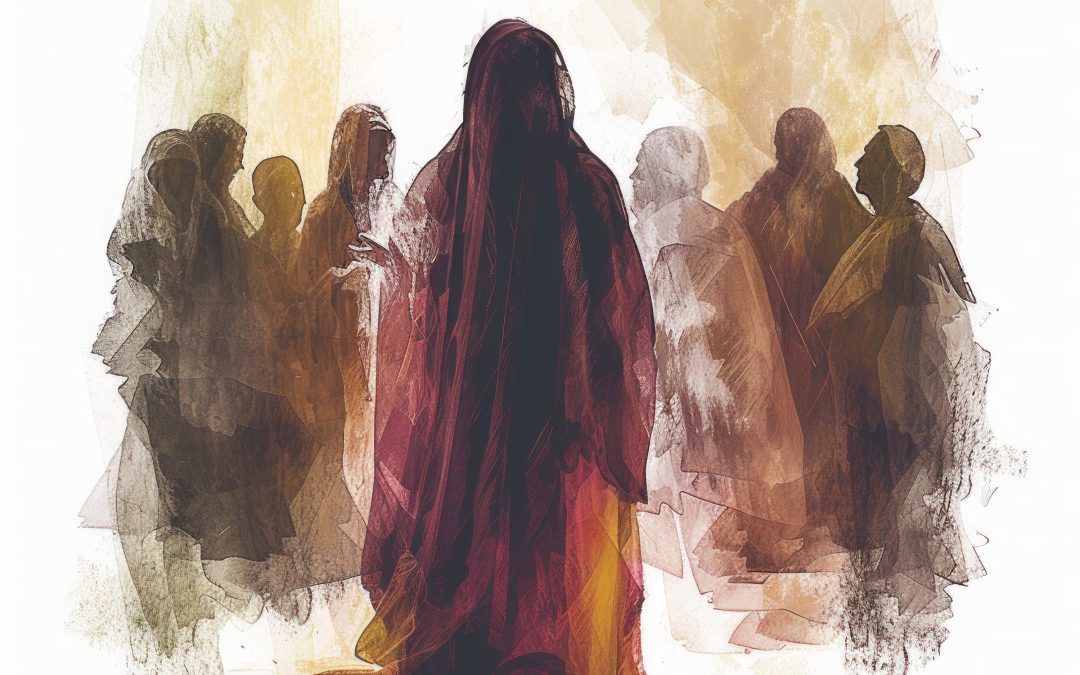“And there was a prophetess, Anna, the daughter of Phanuel, of the tribe of Asher. She was advanced in years, having lived with her husband seven years from when she was a virgin, and then as a widow until she was eighty-four. She did not depart from the temple, worshiping with fasting and prayer night and day. And coming up at that very hour she began to give thanks to God and to speak of him to all who were waiting for the redemption of Jerusalem” (Luke 2:36-38, ESV).
When he was about six weeks old (cf. Lev. 12), Joseph and Mary took the baby Jesus to the temple in Jerusalem to carry out the required sacrifice following childbirth. While there, they encountered a remarkable woman named Anna. She is mentioned only by Luke, and only in these three brief verses. Yet, Luke affords us enough detail for a glimpse at the kind of woman she was.
Prophetesses are few and far between on the pages of Scripture (e.g. Miriam [Exod. 15:20]; Deborah [Jud. 4:4]; Huldah [2 Kings 22:14]; Philip’s four daughters [Acts 21:9]). That Anna was a prophetess indicates she was inspired by God. How was she chosen to prophesy, and how long had she done so? We are not told; but, the Lord must have seen something very special in her.
Nothing else is known of her father, Phanuel, other than what is here stated. Then again, perhaps the character of his daughter speaks volumes about the man Phanuel must have been (and, likewise, about the character of Anna’s unnamed mother). The finest achievement of godly parents may be the righteous lives of their children. If Anna is a reflection of what she learned from Phanuel, then he must have been a fine father, indeed.
Commentators differ on their interpretation of what is said regarding Anna’s widowhood, as well as her age, which has been variously put at 84, 105, and 111 years old. What is known with certainty is that she was a widow at least 84 years of age.
There can be no doubt where her priorities lay. That “she did not depart from the temple” indicates her perpetual service and presence whenever public worship was offered. Her religion was not a part of her life—it was her life. Whether the sun was shining or the moon was out, Anna could be found worshiping, fasting and praying. Why she fasted we are not told. Perhaps it was out of mourning for her husband; perhaps it was due to an expectation she held—maybe even of seeing the long-awaited Messiah.
Herod’s temple in Jerusalem was a massive complex, with grounds covering perhaps as much as thirty-five acres. As out-of-towners, Joseph and Mary were not frequently found there. Yet, the hand of providence saw to it that Anna arrived with perfect timing to behold the divine infant. It is no difficulty for God to move people to places they need to be in order to accomplish his will.
Anna was one who was “waiting for the redemption of Jerusalem,” and her hope paid off, as it will for all who wait on the Lord. Unlike many of her contemporaries who would later reject the Christ, due at least in part to their inaccurate concept of an earthly Messiah, Anna seems to have grasped the spiritual nature of Jesus’ mission.
What was her reaction on seeing the Savior? She immediately gave thanks to God and began to spread the news to others. She did not use her old age as an excuse not to get busy. She did not leave it to a younger generation, assuming they would do the job. She did what she could, with haste and all the enthusiasm she could muster. What an example!
Advanced in years as she was, Anna probably never lived to see Jesus grow up. She may have never seen the Lord again after this initial encounter. In all likelihood, she was dead long before the crucifixion. But, in these three verses, she shines as a sterling model of what a Jew under the Law of Moses could and should be. The Holy Spirit wrote her into the record for a reason. Anna’s is the picture of a woman who wanted to go to heaven, and who spent her life as close to God as she could get on earth. Won’t it be grand to make her acquaintance in the new Jerusalem!
– Weylan Deaver


